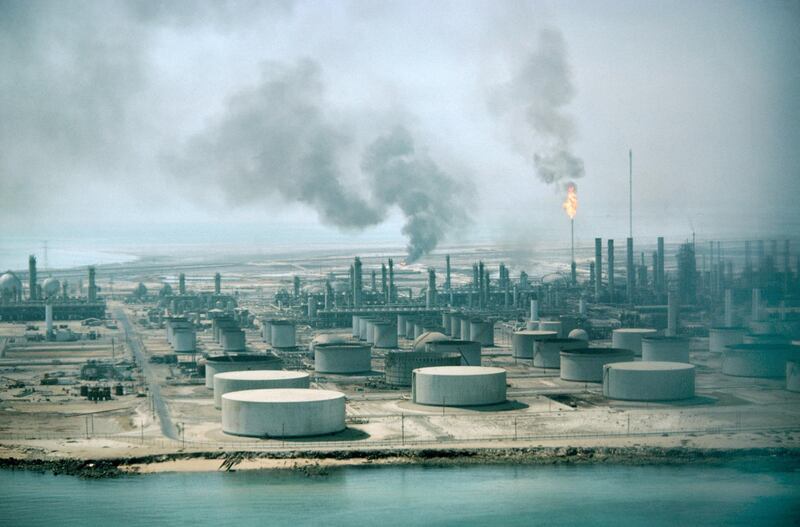Opec producers led by the UAE and Saudi Arabia will increase their push towards locking in long-term crude and oil product contracts in Asia as they compete with higher US exports to the region.
“Long-term contracts give assurance to the producer/refiner, they know that the product is sold, they know the price, their income is locked in and so it is easier to plan, easier to make investment decisions," said Spencer Welch, director for oil markets and downstream at London-based IHS Markit.
Saudi Arabia and the UAE are producing more refined products after cutting back on crude supply to comply with the ongoing global oil output cuts.
Saudi Arabia, the world's biggest oil exporter, and the UAE, the second-largest Arabian Gulf producer, are earmarking more crude for Asia and boosting exports of refined products, as they seek to extract more value from each barrel of oil pumped.
As the US increases exports for crude, condensate and products, Gulf producers would likely want to lock-in Asian buyers.
"I can't see Gulf producers selling much to US, they need to sell to Asia," Mr Spencer said.
_______________
Read more:
Abu Dhabi awards interest in offshore oil concession to Indian consortium
Saudi Aramco and Sabic to build world's largest oil-to-chemicals plant
Adnoc opens up for more partnerships in new era
_______________
Now producers are also moving to guarantee long-term exports of crude products as the global oil output to trim 1.8 million (bpd) is set to remain in place until the end of 2018 with a possible extension beyond.
Last month, Adnoc signed a long-term contact with Malaysian petrochemical company Lotte Chemical Titan to supply a million tonnes of naphtha over the next three years, a shift from the earlier short-term contracts. Naphtha is a refined product that is used as a feedstock to produce petrochemicals.
Adnoc, which in November announced the acceleration of its downstream-focused strategy, has signed similar three-year long-term deals over the past three weeks with naphtha customers in Thailand and Japan, a company spokesman told The National.
“We'll be looking at a multitude of different approaches. For Adnoc, this is about stretching the margin of every barrel of oil and securing market share in fast-growing economies,” he said.
Last week, Adnoc chief executive and UAE Minister of State Dr Sultan Al Jaber visited Japan in order to forge partnerships with Japanese petrochemical firms and expand downstream activities. Adnoc, which is eyeing new markets as it seeks to triple its petrochemical production by 2025, has a $109bn five-year capex programme that also includes downstream investments abroad.
Adnoc, which last year entered into an agreement with India's Strategic Petroleum Reserve to park up to six million barrels of crude underground in Mangalore in the country's south, awarded a 10 per cent stake in an offshore concession to an Indian consortium led by ONGC on Sunday. The move, the first hydrocarbon rights agreement between Abu Dhabi and Asia's third-largest economy, forms part of increasing efforts by Gulf producers to service growing Asian demand by offering investment opportunities to lock-in long-term supply.
The UAE's push comes amid an increasing flow of US exports of crude and products, including naphtha into the Asian markets over the past year.
Saudi Aramco also aims for more downstream integration to counter setbacks to its crude market share as a result of the Opec curbs
Last month, Aramco chief Amin Nasser said the company planned additional investments in China and looked to develop a refinery in India.
Saudi Aramco declined to comment on its downstream and product sales strategy
___________
Read More:
Adnoc to boost carbon capture in oilfields by six-fold over the next 10 years
Adnoc chief: global growth to inflate energy demand, putting pressure on producers
___________
. .
Gulf producers' moves for engagement with Asia comes amid a relaxation of crude export restrictions in the US, where current production has surged to 10.25 million bpd, overtaking Saudi Arabia, the latest data from US Energy Information Administration (EIA) shows. Exports, meanwhile, average a million bpd and set to increase to two million bpd by the second half of the year or early 2019, the EIA said. With the caps lifted, US crude has found its way into newer markets and increased supply to meet rising demand. Recent data from Thomson Reuters shows that crude shipments to China have surged to a record 400,000 bpd in January, with half a million tonnes of liquefied natural gas sourced from the shale gas boom in the US also making its way there.
The US also delivered its first ever cargo of shale - a 1.6-million-barrel shipment - to India in October as the world’s third-largest oil consumer looked for alternative supply to balance its traditional off-take of Middle East crude.
"People have spoken of 1.5 or 2 million exports of shale, but they [refiners] are now taking Middle Eastern crude," said Chris Midgley, global content director for analytics for Platts. "India has complex refineries that don't necessarily want to take this light crude from the US, so the Middle East will try to compete with that.”







